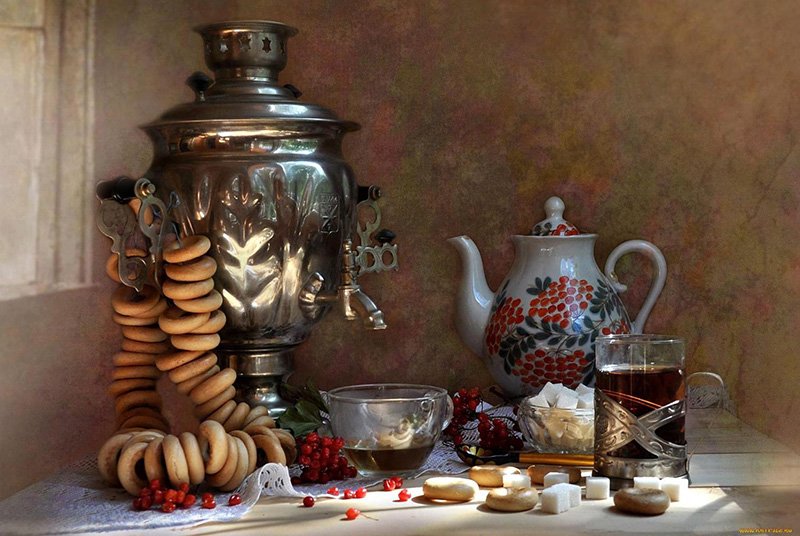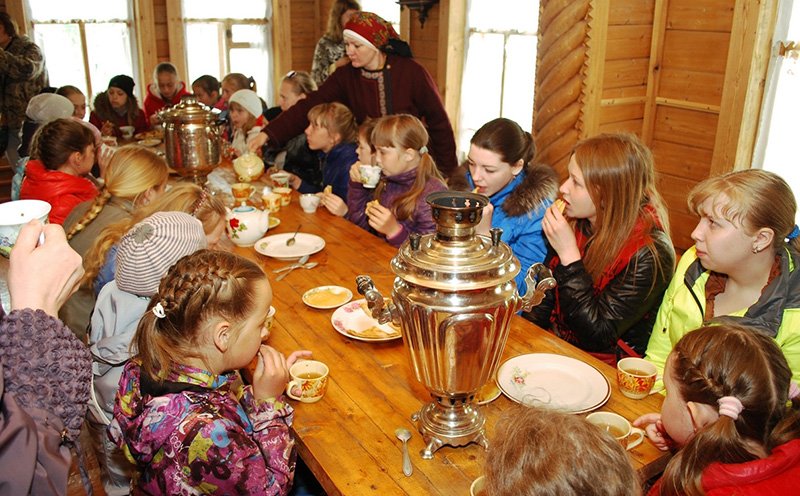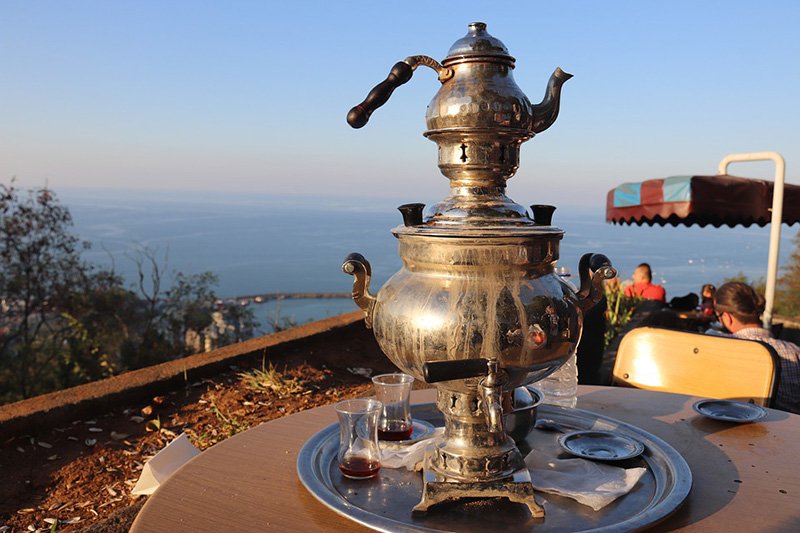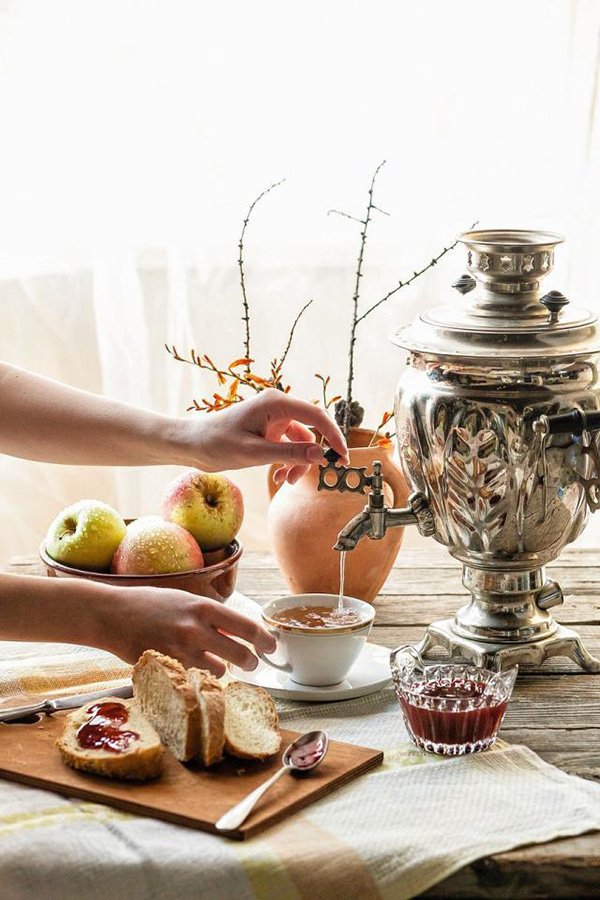Last Updated on 11/04/2020 by Desmond
Russia has the largest land area in the world; most of our impression of it may be Putin, bear, belle, and vodka. But if you thought the wine is the only drink to the Russian, that may be a mistake. A traditional tea drink “zavarka” is also popular. This Russian tea means a lot to them, even as important as vodka in their mind.

CONTENT
Russia Tea History
What we know that China is the birthplace of tea. But how the tea spread to Russia, there still is a debate about this. Scholars mainly hold two views on this:
One viewpoint is that tea was brought to Russia through Siberia in 1638. At that time, the envoy Vasily Starkov exchange gifts with the khan of Mongolia and got about 64kg tea. After the envoy brought it back to Moscow, Tsarist tasted and fell in love with it immediately. Since that, the habit of tea consumption began popular in Royalty and nobility.
Another saying is that Russian been drinking tea is earlier, according to some historical records. In 1567, two Cossack of atamans, Petrov, and Yalyshev ever described a strange local drink they tried in China. This kind of beverage has been general consume in south-east Siberia and central Asia, what is tea in practice. But maybe the two atamans were not good at describing it, so tea has not attracted the attention of the Tsars and nobles at that time.

No matter when the tea appeared in Russia, in the beginning, it was a very precious drink. The ordinary people were hard to have a try.
In 1727, Emperor Yongzheng of the Qing Dynasty(China) signed a trade agreement with Russia, and tea is the primary commodity in the deal.
The agreement protocoled a trade path, which strat from Wuyi Mount(China) and ends at Kiakhta(Russia). This Tea Road(Siberian Route) was over 10 thousand km, and the journey usually needs more than six months by caravans of camels.
Because it was a long journey, black tea and dark tea, which suitable for long storage was the best choice. Even though green tea also took part, but due to it is non-fermented, so it was easy to go bad. And during the journey, the caravan’s members would make a fire to keep warm, which make the goods got a smoky flavor inevitably. As a result, the later Russian preferred tea with a smoky flavor, especially Lapsang Souchong and Da Hong Pao tea.
Import tea from China was hard at that time. Therefore, in the 18th, tea was still a luxury in Russia, and having tea once became a symbol of status and wealth. Until the beginning 19th, local tea plantations built, then the tea been popularized all over Russia.
Russian Tea Culture
After several centuries of development, tea has already become the most favorite beverage of Russian, and form a unique tea culture.
In Russia, the fragrance of tea is everywhere. Whether in the house or outdoor, at a restaurant or a cafe, you can also smell it. It is said that the tea house in Moscow often crowded with customers. Once the tea time comes, people even put down what they are doing, just for a cup of tea. They thought tea is a big fun of life, and it’s the best way to socialize.

Russian seems to prefer black tea. But when they are brewing tea, they love to add too many loose tea leaves to make the infusion in a high concentration, which they called it “zavarka.” Except for black tea, green tea, or oolong tea also a nice choice for making zavarka.
They got a unique teaware – Samovar, you can imagine it as a big kettle for boiling water. Samovar typically made from brass or stainless steel, and some even made from silver or gold, decorated with enamel, delicate and expensive.

There is a metal pipe in the middle of the samovar for filling fuel. At the top, there is a vent, can connection a chimney for better exhaust when heating. After the water boiled, move the chimney away, and put the teapot on it, the hot air can keep the tea warm. Because the fuel in the pipe is still burning, so the water in the samovar is always heating.
On the body of samovar, there is a tap. People got hot water from it to dilute the high concentration zavarka. The fuel for boiling water is typically wood, carbon, and dried pine cone, so the water often has a wood smoke smell, and this is what Russian wants.
Due to the long time steeping, the tea infusion is not only at a high concentration but also contains more tannin and caffeine, which makes the tea taste bitter. Even though add hot water for diluting, the tea would not taste better again. So Russian never consume pure tea; they love to make it into sweet tea by adding sugar, lemon, honey, or milk, sometimes even jam.

But in the case of Siberia, the nomad gets used to add butter and salt in tea for seasoning. This habit may come from Mongolia and Tibet such plateau sections.
Besides, the drinking tea way of Russian is special. Especially in some traditional villages, the old folks like to use the tea saucer but not the cups for having tea. That can let the hot tea cool down faster. Add the sweet in the tea first, then pour it in a saucer, sip carefully. Besides, local Russian also love to bite a piece of sugar or keep some honey/jam in mouth first, after sipping the hot tea in, they will mix, and get a more sweet shock.

The meaning of Russian tea culture is different from China and Japan; it would not link to philosophy. It only about sharing fun and cuisine. Crowd together, having tea and communicate merrily. The samovar’s capacity at least 4L provides enough time for improving the relationship with your friends and family.
What Is Russian Caravan Tea?
Most of the time, Russian tea refers to a having tea way and culture in Russia, not a single type of tea. But when we are going to buy tea on the internet, we may find a product named Russian Caravan Tea. What is that?
In fact, they are all blended tea, which uses Lapsang Souchong, oolong, or Ceylon tea as basic-tea, and mixed with some spice such as cinnamon, or orange flavor agent.
And the named Russian Caravan Tea may originate in the 1960s, the age of space race between the USA and the Soviet Union. Americans at that time like to make lemon black tea and imagine it is the recipe of the Russian tea, it was popular.
It just so happened that Tang invented the instant mixed beverage, which taken as the official drink in the NASA human spaceflight plan. The church staff found it was easy to prepare a vast so-called Russian tea for the party with these instant granules; that makes the name more famous.
So, it can say Russian caravan tea actually has nothing to do with Russia.
Reference:
Another wonderful article. It’s amazing how a handful of species of the Camelia flower leaves and buds can create so many different teas. I love Russian Caravan tea, although I didn’t know the name was cold war related. It thought it was always called that. I like a little bit of smokiness in my tea but some Lapsang Souchongs can be a little bit too bitter.